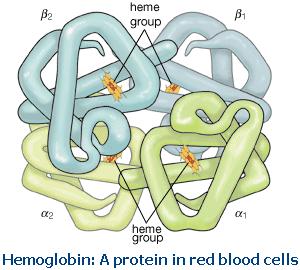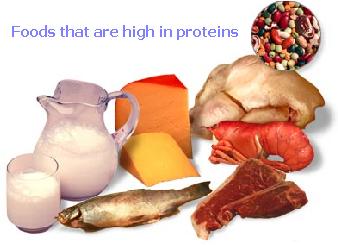| |
Proteins are a type of organic compound - large and complex collections of molecules. They are the major molecules from which living things are constructed. They help us digest our food, fight infections, control body chemistry, and in general, keep our bodies functioning smoothly.
In body tissues, proteins act as supporting and strengthening materials. Bone, cartilage, tendons, and ligaments are all composed of protein. They are the principal component of skin, muscle, and hair.
Proteins also determine the shape and structure of cells, and make up more than half the dry weight of cells. Inside the cells, certain proteins are dissolved or suspended in the watery interior, while others are incorporated into various structures.
Proteins embedded in the outer membrane form channels and pumps that control the passage of small molecules into and out of the cell. Other proteins carry messages from one cell to another, or relay signals inward from the outer membrane to the cell nucleus. Yet others serve as tiny molecular machines with moving parts.
Proteins are the main players in the chemical reactions that are necessary for cell maintenance, growth and development. Those proteins called enzymes lower the amount of energy that is required for essential chemical reactions to occur. They also carry out the replication and repair of genetic material (DNA), and the synthesis of other proteins.
 |
|
Other specialized proteins act as antibodies, toxins, hormones, antifreeze molecules, elastic fibers, ropes, or sources of luminescence.
Before we can hope to understand how muscles contract, how nerves conduct electricity, how embryos develop, or how our bodies function, we must attain a deep understanding of proteins.

Proteins & Nutrition
Proteins are composed of units called amino acids. Most microorganisms and plants can make all their own amino acids. Animals, including humans, must obtain some amino acids from food that contains protein in order for some very important chemical reactions to occur. The amino acids that we must obtain from food are called essential amino acids.
Most of the protein that we eat is converted during digestion to amino acids that is used by our bodies to make the proteins we need. Some is also a source of nitrogen.
When we do not eat enough because of dieting or starvation, the protein in our bodies can be used as fuel to support life.
|
|